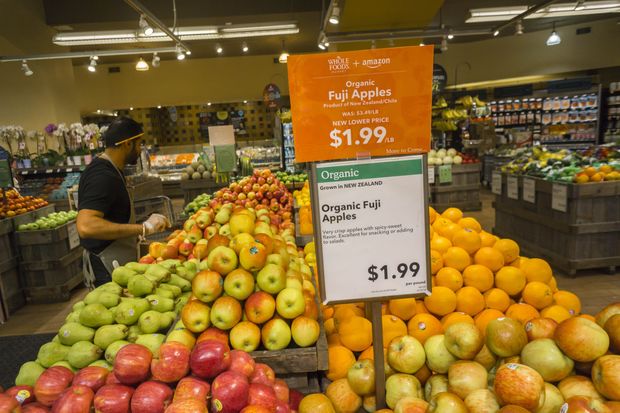
Wall Street is bracing for the possibility of inflation making an unlikely return next year.
Expectations for heightened inflationary pressures reflect the economic devastation wrought by the COVID-19 pandemic during the second-quarter of this year which resulted in several months of subdued inflation readings, but as these weaker months roll out of yearly inflation measures in the second half of next year, U.S. price levels could test and surpass the central bank’s target of 2%.
The sharp hit to the U.S. economy this year would end up laying the foundation for higher inflation numbers, according to Guy LeBas, chief fixed income strategist at Janney Montgomery Scott, in an interview.
JP Morgan economists estimated there is a 70% chance of personal consumption expenditures exceeding 2%, excluding volatile food and energy prices.
But LeBas suggested investors shouldn’t get too carried away.
“Right now, we’re in the greatest dis-inflationary impulse we’ve seen in a decade,” he said.
And many economists see this kind of so-called base effect as more of a statistical quirk rather than a long-term, structural increase in inflation that some have warned against.
Market-based measures of inflation risks have returned back to pre-pandemic levels, in part due to the Federal Reserve’s announcement last week that it would aim for an average inflation rate of 2%.
The 10-year breakeven inflation rate based on U.S. Treasury inflation-protected securities TIP, +0.03% is up to 1.80%, Tradeweb data shows. And on a more forward-looking measure, the 5-year, 5-year inflation swap implied an expectation that five years from now consumer prices would average at 2.14% over the following five years, according to Bloomberg.
Long-dated Treasury yields have also started to price in inflation concerns. The 30-year bond yield TMUBMUSD30Y, 1.428% was down a few basis points to 1.43% on Tuesday, after rising by around a quarter percentage point in August, its largest such jump since the month of President Donald Trump’s election.
If markets are right, it will give the Fed the opportunity to show how the central bank’s new average inflation targeting regime works.
Under the policy, the Fed would not respond to temporary overshoots of the inflation target with interest rate hikes to make up for periods when price pressures were muted.
“If inflation does rebound, the Fed needs to put their money where their mouth is,” Tom Graff, head of fixed income at Brown Advisory, told MarketWatch.
It was important that when inflation did return to 2%, the Fed needed to push back against any expectations for it to promptly raise interest rates in a public manner to convince the market it would adhere to its new policy approach.
“Otherwise, this will all be for naught,” said Graff.
In stocks, the S&P 500 index SPX, +0.56% and Nasdaq COMP, +1.21% touched fresh intraday records on Tuesday after stronger-than-expected manufacturing activity data showed U.S. factories continued to recover from the pandemic.










Add Comment